
Ingredient
Wild boar edible offal, non-muscle, other than liver and kidney
Savory Treasures from the Wild
Wild boar edible offal, non-muscle, other than liver and kidney, refers to the organs and parts of a wild boar other than its liver and kidney. These include the heart, lungs, spleen, and intestines. The offal has a rich, gamey flavor and a tender yet slightly chewy texture. Its appearance varies depending on the specific organ, ranging from reddish-brown to dark brown.
Origins and history
Wild boar has a long history of being hunted and consumed in many cultures around the world. The use of wild boar offal in cooking dates back centuries, with traditional dishes like 'Pâté de Sanglier' (Wild Boar Pâté) and 'Tripes de Sanglier' (Wild Boar Tripe) being popular in European cuisines.
Nutritional information
Wild boar edible offal, non-muscle, other than liver and kidney, is a good source of protein, vitamins, and minerals. It is particularly rich in iron, zinc, and vitamin B12. However, it is also higher in fat compared to lean cuts of meat.
Allergens
Individuals with pork allergies may also be allergic to wild boar offal. It is important to exercise caution and consult with a healthcare professional if you have any known allergies.
How to select
When selecting wild boar edible offal, non-muscle, other than liver and kidney, choose organs that are fresh, firm, and free from any signs of discoloration or unpleasant odor. The offal should have a vibrant color and a moist surface. If purchasing from a butcher, ensure that it is sourced from a reputable supplier.
Storage recommendations
To maintain the freshness of wild boar edible offal, non-muscle, other than liver and kidney, store it in a refrigerator set at a temperature below 40°F (4°C). Wrap the offal tightly in plastic wrap or place it in an airtight container to prevent any odors from permeating. Consume within a few days of purchase for optimal quality.
How to produce
Wild boar can be hunted or raised in a controlled environment for the purpose of harvesting its offal. However, it is important to follow local regulations and guidelines regarding hunting and farming practices.
Preparation tips
Wild boar offal can be prepared in various ways, depending on the specific organ. The heart and lungs can be grilled, roasted, or braised, while the spleen and intestines are often used in stews, sausages, or pâtés. It is important to thoroughly clean and cook the offal to ensure food safety.
Culinary uses
Wild boar edible offal, non-muscle, other than liver and kidney, is commonly used in European cuisines, particularly in dishes like Wild Boar Pâté, Wild Boar Tripe, or Grilled Wild Boar Heart. It adds a rich, gamey flavor to these preparations.
Availability
Wild boar is commonly available in regions with a tradition of hunting or farming wild game. It is cultivated in countries like France, Italy, Spain, and the United States.
More ingredients from this category
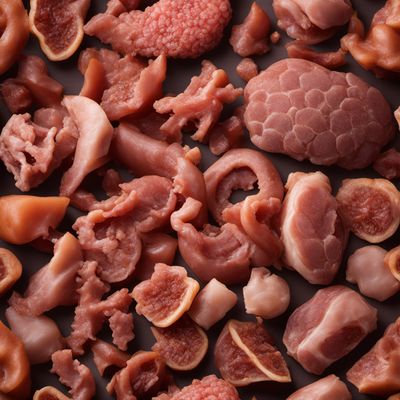
Camel edible offal, non-muscle, other than liver and kidney
Unveiling the Hidden Gems: Exploring the Exquisite Camel Edible Offal

Rabbit edible offal, non-muscle, other than liver and kidney
Unveiling the Hidden Gems: Exploring the Versatile Rabbit Edible Offal
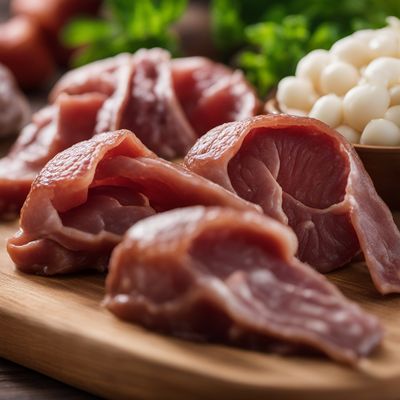
Equine edible offal, non-muscle, other than liver and kidney
Exploring the Hidden Gems of Equine Edible Offal

Bovine edible offal, non-muscle, other than liver and kidney
The Hidden Gems of Bovine Offal

Sheep edible offal, non-muscle, other than liver and kidney
Exploring the Delicacies of Sheep Edible Offal

Deer edible offal, non-muscle, other than liver and kidney
The Hidden Gems of Deer: Exploring Non-Muscle Edible Offal

Pig edible offal, non-muscle, other than liver and kidney
Beyond the Ordinary: Exploring the Versatility of Pig Edible Offal

Goat edible offal, non-muscle, other than liver and kidney
The Hidden Gems of Goat: Exploring the Delicacies of Edible Offal
Recipes using Wild boar edible offal, non-muscle, other than liver and kidney » Browse all

Frittata Pasquale Umbra
Easter Delight Frittata: A Traditional Italian Celebration

Salsiccia di Brugnato with Roasted Vegetables
Savory Italian Sausage with Herb-Roasted Vegetables
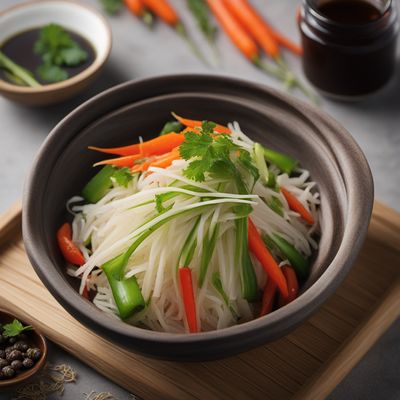
East Asian Pickled Vegetables
Tangy and Crunchy East Asian Pickled Vegetables
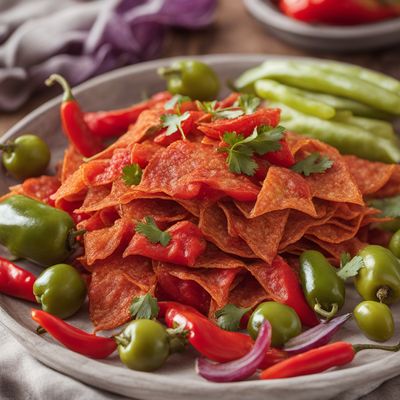
Mostachos de Utrera
Andalusian Delight: Crispy Mostachos with a Spanish Twist
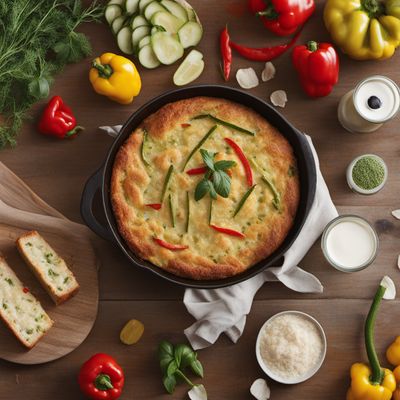
Toc' in Braide - Italian Savory Bread Pudding
Savory Delight: Toc' in Braide - A Taste of Italian Comfort

Korean Seafood Pancake
Oceanic Delight: Korean Seafood Pancake

Pancit Cabagan with a Twist
Savory Pancit Cabagan: A Filipino Delight with a Modern Twist

Cuscuz Paulista with a Philadelphia Twist
Philly-inspired Cuscuz: A Fusion of Brazilian and Philadelphia Flavors

Mangalorean Catholic Style Bacalao Curry
Spicy and Tangy Mangalorean Bacalao Delight

Zesty Ischia Medley
Mediterranean Melange: A Burst of Flavors from Ischia

Polenta with Grains and Vegetables
Hearty Italian Polenta Delight
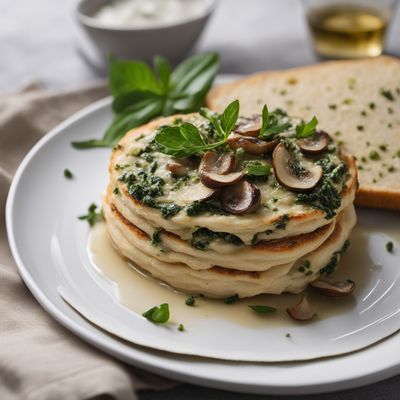
Caponèt with a Twist
Savory Delight: A Modern Twist on Caponèt